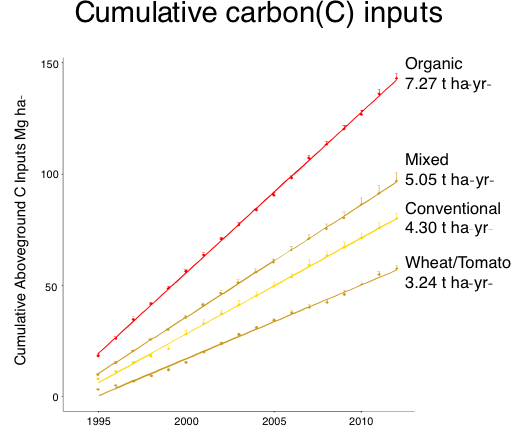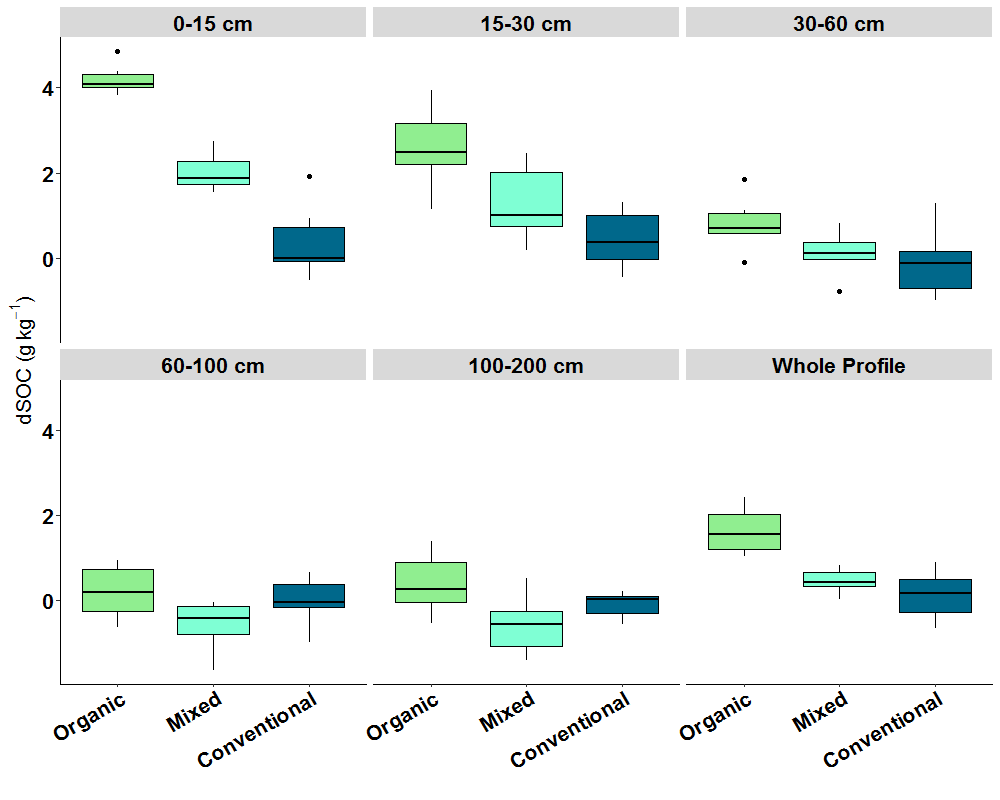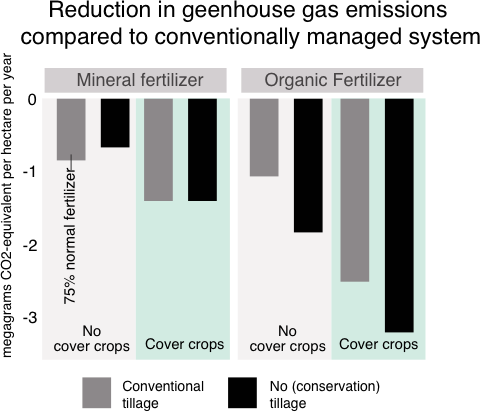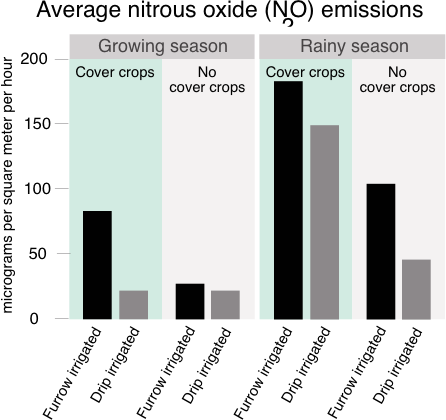We are exploring how farm practices can help store carbon in the soil (and out of the atmosphere) and use less energy and water, and how farms can adapt to an increasingly hot, variable climate
Climate Change in Context
- The agricultural sector generates major emissions of carbon dioxide, nitrous oxide, and methane, all greenhouse gases that are contributing to climate change
- Agriculture also has the potential to mitigate climate change by sequestering atmospheric carbon in the soil
- Climate change will harm crop productivity and put the world’s food system at risk
- Farmers and researchers are exploring ways to reduce agriculture’s contributions to climate change while identifying practices that can help agriculture adapt to a heating planet
We monitor and compare greenhouse gas emissions in:
- long-term cropping systems (rotational tomato, corn, wheat, and alfalfa systems)
- organic and conventional systems
- drip and furrow irrigated systems
How we look at climate change
Key research questions we are exploring include:
- What is the best mix of inputs and management systems to increase the energy-use efficiency of cropping systems?
- How do increased temperatures and higher carbon dioxide levels affect crop production and ecosystem services on the farm over extended time periods (e.g., 20+ years)?
- How can food production be more carbon neutral?
- How can we use less energy, less water, and sequester more carbon for each system?
- How does adding more carbon to the soil affect disease, pests, yields, and water use on the farm?
Featured Research Projects
- Carbon sequestration in the soil
- For over 20 years we have closely monitored how much carbon we put on the field, and how much carbon is sequestered in the soil. With this long-term dataset we hope to identify ways that farmers can “store” more carbon in their soil.
In 2005, we published the results of 10 years of these measurements for our 10 different cropping systems. Between 1994 and 2003, our organic corn-tomato rotation received the most carbon inputs while our non-irrigated (rainfed) wheat system (which lies fallow in the wintertime) received the least. The organic corn-tomato system also saw the largest increase in carbon content in the soil (sequestered carbon).
The figures below show the cumulative carbon applied to our tomato systems over time (first figure) and changes in soil organic carbon by depth across all of the different cropping systems (second figure).

Change in soil organic carbon (SOC) by system and depth for the years 1993-2012. - Alternative management practices and greenhouse gas emissions
 Research has shown that a variety of alternative management practices can reduce greenhouse gas emissions, when compared to a conventionally managed system.
Research has shown that a variety of alternative management practices can reduce greenhouse gas emissions, when compared to a conventionally managed system.
Using cover crops and organic fertilizers, particularly when paired with conservation tillage, result in the most dramatic greenhouse gas mitigation potential (see more in the figure to the right, adapted from De Gryze et al. 2011). But cover crops alone can also increase the ability of soils to serve as a sink for atmospheric carbon dioxide.- Irrigation and greenhouse gas emissions
 Research has shown that winter cover crops increase nitrous oxide (N2O) emissions (a result found in other studies), especially under furrow irrigation.
Research has shown that winter cover crops increase nitrous oxide (N2O) emissions (a result found in other studies), especially under furrow irrigation.
But switching to subsurface drip irrigation eliminates or reduces the increase in nitrous oxide emissions brought on by cover cropping (see figure to the right, adapted from Kallenbach et al. 2010).